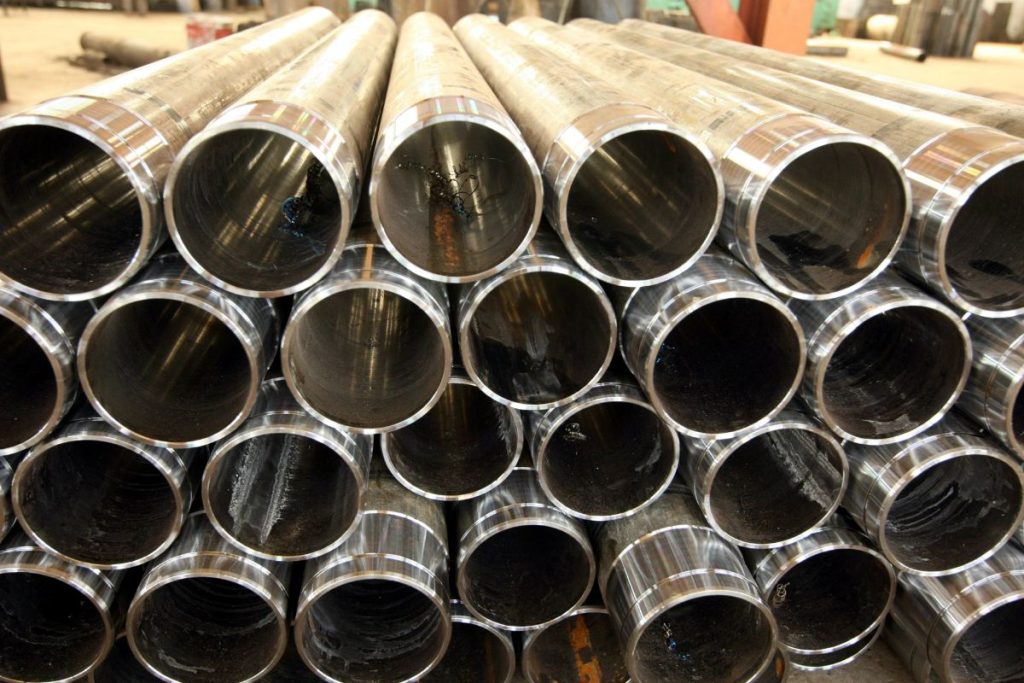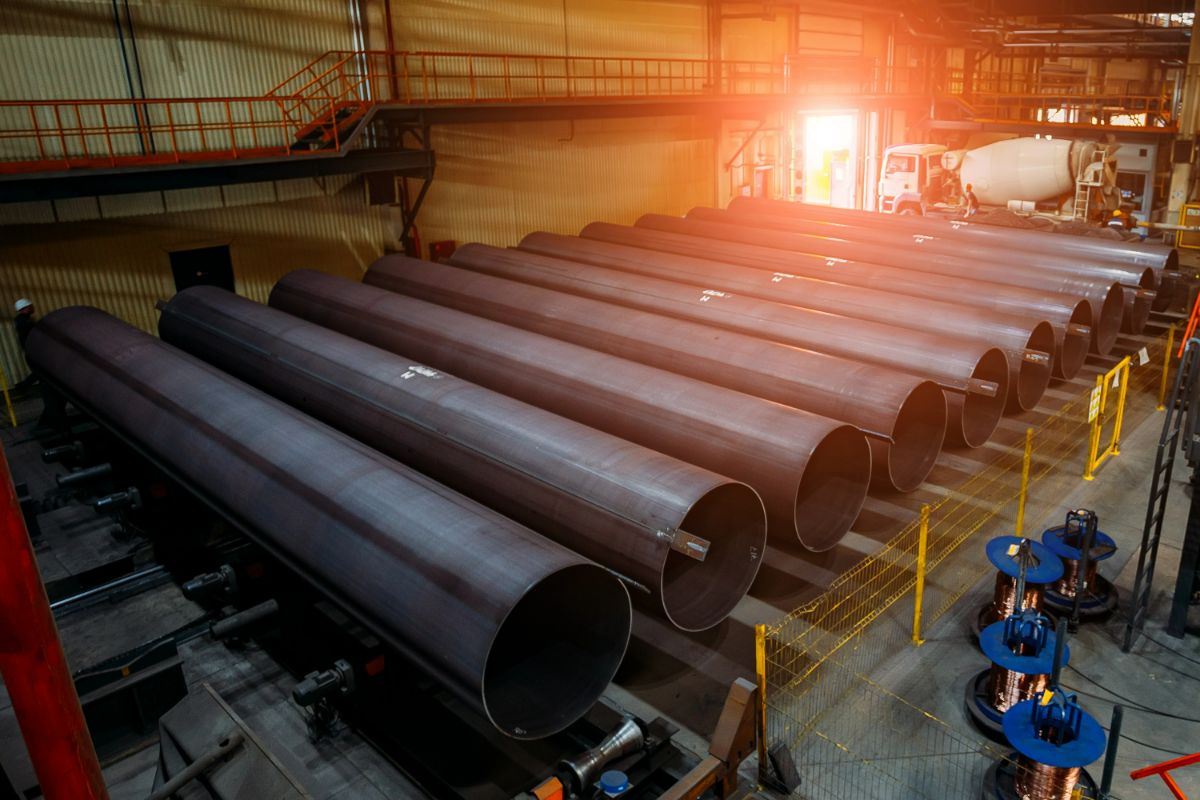5 Steps in Coating Your Steel Pipes

What are the steps in coating your steel pipes?
- Surface preparation
- Coating application
- Heating and curing
- Cooling and inspection
- Field joint coating
Overview
- This article covers the comprehensive process of coating steel pipes, from surface preparation to coating application and curing.
- It highlights various techniques such as extrusion coating, powder coating, and fusion-bonded epoxy, each providing distinct benefits like corrosion resistance and durability.
- Additionally, it discusses field joint coating to protect pipe connections, ensuring long-lasting performance in demanding environments and reducing maintenance costs for infrastructure projects.
The steps for coating steel pipes involve applying a protective layer or material to their surface to improve resistance to corrosion, wear, and environmental factors. These are essential for maximizing durability and efficiency, allowing pipes to withstand harsh environments, resist wear, and maintain optimal performance over time. This makes them ideal for demanding infrastructure projects.
Metal Exponents Inc., recognized for providing high-quality steel products in the Philippines, is committed to supporting contractors and developers in need of durable, reliable materials. Our imported steel pipes are engineered to meet the stringent demands of construction and development, ensuring long-lasting performance.
Surface Preparation
Proper cleaning methods, such as mechanical techniques like wire brushing and grinding, are used to remove contaminants like rust, scale, and dirt. Chemical cleaning methods, including solvent cleaning and acid pickling, ensure the surface is free from oils and organic matter.
Profiling the steel surface creates the necessary texture for better adhesion, enhancing coating durability. Furthermore, techniques like sandblasting not only clean but also profile the surface to the required roughness. This thorough preparation prevents peeling, improves corrosion resistance, and results in longer-lasting coatings that reduce maintenance and boost efficiency.
Coating Application

The coating application process involves various methods designed to enhance the durability and protection of steel pipes. These techniques ensure that the pipes can withstand harsh conditions and perform reliably over time.
Extrusion Coating
Polyethylene (PE) coating is applied through heating, extrusion, and cooling, creating a thick and uniform layer. This method offers exceptional protection against corrosion and physical damage, ensuring the longevity and reliability of the steel pipes.
Powder Coating
Resin powder is electrostatically sprayed onto preheated pipes and then cured to form a durable, smooth finish. This coating resists chipping, scratching, and fading, making it ideal for maintaining the pipe’s integrity and appearance.
Adhesive Coating
An adhesive layer is first applied to the steel surface, followed by wrapping the pipe in PE. Heat activation enhances the bond strength, providing a durable and reliable protective barrier.
Fusion-bonded Epoxy (FBE)
Epoxy powder is applied to preheated pipes and cured to form a tough, corrosion-resistant layer. FBE coatings are effective for both underground and above-ground applications, offering long-term protection in challenging environments.
Each of these methods offers distinct benefits, ranging from superior corrosion resistance to aesthetic appeal, ensuring the steel pipes perform optimally under various conditions.
Heating and Curing
The main goal of this process is to solidify the coating, improve adhesion, and initiate chemical reactions that strengthen the bond between the coating and the pipe. This begins with preheating the pipes, followed by passing them through a curing oven where they are exposed to carefully controlled temperatures, depending on the coating material.
During curing, chemical reactions activate, transforming liquid coatings into hard, resilient layers. After curing, pipes cool gradually to avoid defects, and thorough quality control checks ensure proper adhesion, thickness, and visual consistency.
This process results in coatings that are more resistant to wear, impact, and chemicals, prolonging the lifespan of pipes.
Cooling and Inspection

Gradual cooling helps prevent thermal shock, which could cause cracks or defects and stabilizes the coating’s physical properties, such as hardness and flexibility. Once the pipes reach room temperature, a thorough inspection is performed to detect visible flaws like bubbles, cracks, or inconsistent coating thickness.
Tests like adhesion pull-off and hardness checks help confirm the coating’s durability. Any defects found are documented, and corrective actions such as rework or re-coating may be implemented. This phase guarantees that only high-quality, durable pipes are delivered, optimizing performance and reducing long-term maintenance costs.
Field Joint Coating
Field joint coating is crucial for protecting vulnerable areas where steel pipes are connected. The process begins with thorough cleaning and preparation of the joint area, using methods similar to those for coating the main pipes. This ensures the removal of contaminants that could compromise adhesion. Surface profiling may also be performed to achieve the necessary texture for a stronger bond.
Once the surface is prepared, a primer is applied to enhance adhesion and provide an extra layer of protection. Depending on environmental conditions, the joint is then coated with materials such as bituminous tapes, liquid coatings, or heat-shrink sleeves.
Like the coating on the main pipes, proper curing is essential for the coating to achieve its full performance potential. The final step involves a meticulous inspection to assess adhesion strength, coating thickness, and the absence of defects, ensuring the field joint is fully protected and ready for long-term use.
Key Takeaway
The steps in coating steel pipes provide long-lasting protection against corrosion and wear. Every stage, from surface preparation to the final coating and thorough inspection, enhances the pipe’s durability and performance.
For over four decades, Metal Exponents Inc. has been a reliable supplier of high-quality imported steel products, providing expert solutions for a range of industrial needs. Trust in our experience on your next project. Reach out to our team today to learn more.


